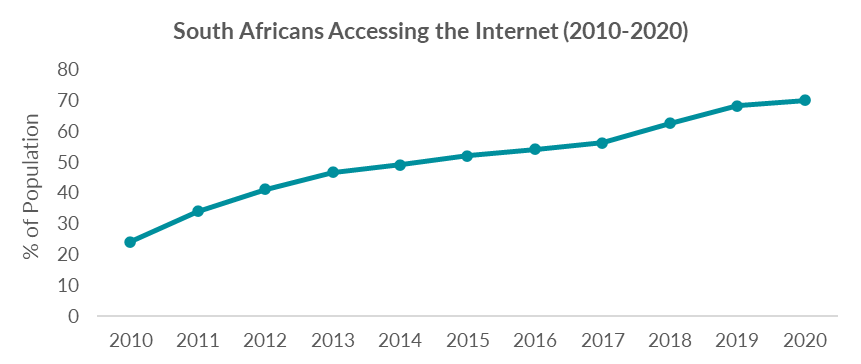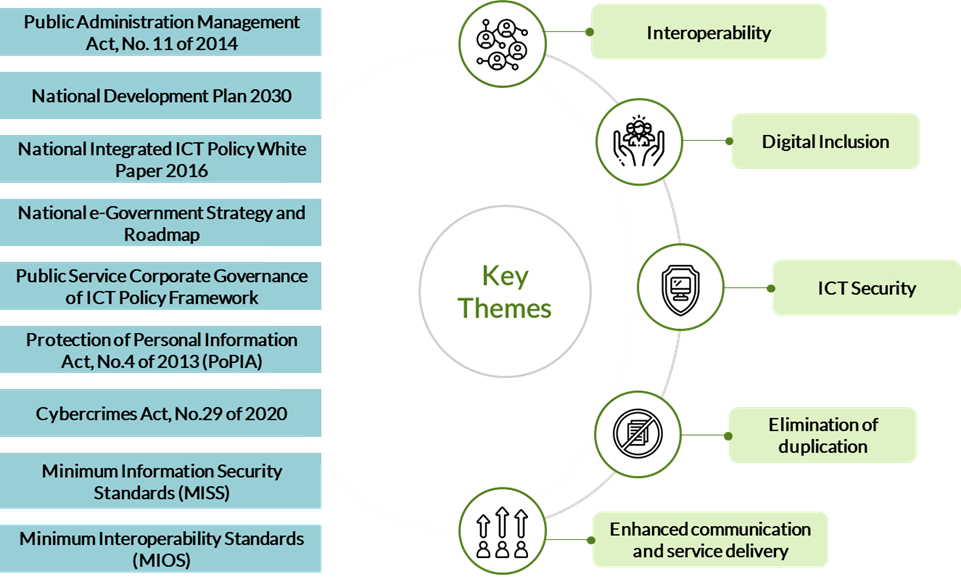In the vast landscape of social challenges facing South Africa, few issues are as pressing as unemployment and inequality. To tackle these complex problems, we must turn to the dynamic force of technology and digitalization. In this article, we explore the pivotal role that government can play in leveraging technology to enhance access to public services.
Access to basic services is key in addressing the social inequality that most South Africans face. Within the context of rising costs, shrinking public sector budgets (made worse by COVID, albeit a trend that was there long before), technology enables better service delivery. Recent announcements by the SA Treasury have only increased this trend, with public sector costs containment set to increase over the short term.
The transformative potential of digitalization, often referred to as e-Government (“the utilization of information and communication technologies for the purpose of providing various government-related services to stakeholders”), presents an opportunity for governments to reach their citizens at a fraction of the cost. In times of constrained budgets and declining revenue streams, the public sector, like any other organization, must do more with less. The era of achieving mere marginal efficiencies in operational processes is insufficient to meet the needs of ordinary South Africans.
Bridging the Gap: Access to Services
Access to essential services lies at the heart of addressing social inequality in South Africa. Leveraging technology has become essential for improving service delivery.
Access to the internet has improved steadily, with most people having access to the internet, and a significant percentage through their mobile devices, as can be seen by the steady increase of both internet and mobile penetration below (Source: StatsSA).

Globally, we have seen key digital trends, driving both demand for access to online services, as well as the provision of services through digital channels. This has of course accelerated throughout the pandemic, where globally three key themes have emerged:
- Digital acceleration: This is a result of the pandemic where systems and processes needed to be moved online at an accelerated pace.
- Digital equity: As a result of a large proportion of services shifting online, it has become apparent that some communities have been left behind/ do not have access to the services. This has prompted digital transformation in order to ensure that there is universal and equitable connectivity.
- Evolution to digital-first mindset: The shift to online has prompted governments to adopt digital solutions in the way services are delivered, underpinned by digital-first thinking and design processes.
In South Africa we see a growing and urbanised youth population, putting further pressure on the need to deliver services digitally. Two key trends have put added pressure on public services:
- Demographic shifts: Africa has experienced an increase in youth numbers in recent years, making it the continent with the world’s youngest and fastest growing workforce. This has led to a rise in the consumption of online services.
- Rapid urbanisation: This is a result of the population increase in cities either due to migration or natural growth. As a result, higher requirements are imposed on digital services and infrastructure.
What is being done?
Providing Access is one of the key principles of “Batho Pele” (the government program to improve service). Further, South African government has recognized the imperative of e-Government and laid out its ambitions for digitalization in its E-Government Strategy and Roadmap, drafted in 2017. Through this, the aim is to digitize government services while transforming South Africa into an inclusive digital society and economy. Remarkably, South Africa has climbed from 78th to 67th on the UN E-Government Development Index (EGDI), reflecting its progress in harnessing the power of technology for public service delivery.
In addition, there are a number of related policies (summarised below) that impact and shape this environment – demonstrating will. While this indicates strategic intent, where South Africa has been lagging, is in the implementation of these.

How can we do more?
At AIA, we have witnessed a shift in the approach to transformation, transitioning from traditional organizational design to digitally enabled operations driven by technology. Technology empowers governments to streamline processes, automate tasks, and reduce the time and effort required by citizens to access public services. The difference between taking a day off work to apply in person and completing it online can have a profound impact on the lives of our fellow citizens.
Charting the Course Forward
Through our numerous engagements in public sector over the past 20 years, as well as experience in developing IT and digital strategies in the private sector, we propose a number of practical and implementable steps for public sector leaders wishing to move forward:
- Outcomes focussed – be clear on what you are seeking to achieve for your key stakeholders, clearly define the metrics, and how these will be tracked. This goes beyond the traditional M&E (Monitoring and Evaluation) framework and seeks to clearly identify the meaningful impacts to be made.
- Define your digitisation strategy – in addition to the outcomes above, every organisation needs a clear assessment of their current state, clear definition of where they want to be, along with a clear pathway (roadmap) to executing. A key step in this journey is to understand your digital maturity - AIA has developed a unique DMI (Digital Maturity Index) which can quickly assist you in assessing your organizations current maturity.
- Adopt a value stream driven approach to digitisation – being clear about how you deliver value to your citizens, and then proactively seeking to improve the process, before digitising
- Ensure that you include all stakeholders, especially employees – successful implementation hinges on support from all stakeholders. This includes current staff. A clear change management strategy, articulating the impact and implications for them (and their jobs!) is critical to ensuring lasting success
We hope that through these steps you can deliver on your digital aspirations. Should you wish to discuss any of these aspects, feel free to contact us.
Oct 2023 4IR Embracing Technology Business Value Futures Digital
